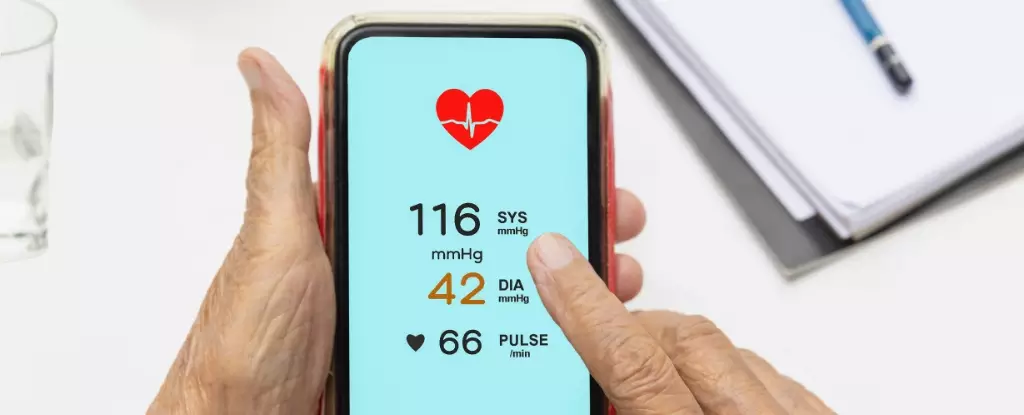High blood pressure, commonly known as hypertension, is a silent epidemic affecting millions globally. Despite its significant health risks—including heart disease and kidney failure—hypertension often goes undetected until serious complications arise. Traditional methods of monitoring blood pressure, which require specialized equipment and healthcare access, present barriers for many individuals. However, an innovative solution has emerged: a mobile application developed by researchers from the University of Pittsburgh, enabling users to estimate their arterial pressure using just their smartphones. This shift in how we approach health monitoring could profoundly impact public health, particularly in underserved communities.
Hypertension is notoriously difficult to diagnose without regular monitoring, necessitating appointments with healthcare providers or the acquisition of specific medical devices like a sphygmomanometer. Access to these tools is often limited, particularly in rural or economically disadvantaged areas. Many individuals are unaware that they are living with high blood pressure, emphasizing the critical need for accessible and reliable monitoring solutions. With smartphones becoming ubiquitous, the potential for these devices to serve as health monitoring tools offers a promising avenue for enhancing public health initiatives.
Ramakrishna Mukkamala, a biomedical engineer involved in the app’s development, highlights that “many people don’t have access to blood pressure cuffs, regular doctor’s appointments, or even know it’s a problem – but they do have smartphones.” This insight underscores the urgency for innovations that leverage existing technology to fill the gaps in healthcare availability and awareness.
The newly developed application uses a combination of the smartphone’s accelerometer, camera, and touch sensors to gauge blood pressure in a novel way. Unlike traditional devices, the app doesn’t rely on cuffs that apply pressure to measure blood flow. Instead, it utilizes the principles of gravity and finger pressure on the device’s touchscreen. Users are instructed to position their hands in various ways and apply specific touches to generate accurate readings of their pulse pressure.
Vishaal Dhamotharan, one of the engineers on the project, explains, “Because of gravity, there’s a hydrostatic pressure change in your thumb when you raise your hands above your heart.” By taking advantage of this phenomenon, the app can deduce changes in blood pressure effectively. Early trials indicate reasonable accuracy in its readings, detecting pulse pressure within approximately 8 mm Hg of actual measurements—a significant feat for an app-based approach.
The app’s innovative approach represents a significant advancement in the development of cuffless blood pressure measurement solutions, which have long been deemed the “holy grail” in medical technology. Current innovations still rely on external devices for calibration, limiting their applicability. The move towards smartphone-based monitoring represents an essential shift toward self-care and personalized health management.
However, the creators acknowledge the challenges they face, particularly in “changing the mentality” around utilizing pulse pressure as a reliable indicator of blood pressure. This education will be critical in ensuring that users understand the app’s function and its reliability.
As this technology is further developed and refined, it has the potential not only to enhance individual health monitoring but also to inform public health initiatives aimed at reducing hypertension-related diseases. Researchers envision a future where individuals no longer need to visit a clinic to monitor their health, leading to early detection and intervention.
The smartphone application developed by the University of Pittsburgh team illustrates a groundbreaking approach to blood pressure monitoring that corresponds to 21st-century technological advancements. It has the potential to bridge healthcare gaps, especially in underserved populations, and encourages individuals to take charge of their health proactively. As we continue to develop such innovative solutions, it becomes clear that mobile technology can play a central role in transforming healthcare and enhancing the quality and accessibility of medical information.

Leave a Reply